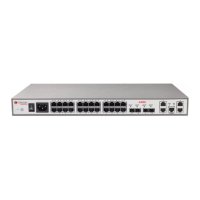A10E/A28E/A28F Configuration Guide
8 OAM
This chapter describes basic principles and configuration procedures of OAM, including the
following chapters:
EFM
CFM
SLA
8.1 EFM
8.1.1 Introduction
Initially, Ethernet is designed for LAN. Operation, Administration and Maintenance (OAM) is
weak for its small size and a NE-level administrative system. With continuous development of
Ethernet technology, the application scale of Ethernet in telecom network becomes wider and
wider. Compared with LAN, the link length and network size for telecom network is bigger
and bigger. The lack of effective management and maintenance mechanism has seriously
obstructed Ethernet technology applying to the telecom network.
To confirm connectivity of Ethernet virtual connection, effectively detect, confirm and locate
faults on Ethernet layer, balance network utilization, measure network performance, and
provide service according Service Level Agreement (SLA), implementing OAM on Ethernet
has becoming an inevitable developing trend.
Ethernet OAM is realized in different levels, as show in Figure 8-1, and there are two levels:
Link-level Ethernet OAM: it is applied in Ethernet physical link (that is the first mile)
between Provider Edge (PE) and Customer Edge (CE), which is used to monitor link
state between user network and operator network, and the typical protocol is Ethernet in
the First Mile (EFM) OAM protocol.
Business-level Ethernet OAM: it is applied in access aggregation layer of network,
which is used to monitor connectivity of the whole network, locate connectivity fault of
network, monitor and control performance of link, and the typical protocol is
Connectivity Fault Management (CFM) OAM protocol.

